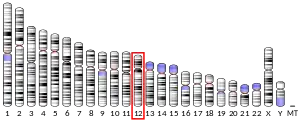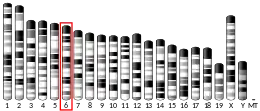| ABCC9 | |||||||||||||||||||||||||||||||||||||||||||||||||||
|---|---|---|---|---|---|---|---|---|---|---|---|---|---|---|---|---|---|---|---|---|---|---|---|---|---|---|---|---|---|---|---|---|---|---|---|---|---|---|---|---|---|---|---|---|---|---|---|---|---|---|---|
| Identifiers | |||||||||||||||||||||||||||||||||||||||||||||||||||
| Aliases | ABCC9, ABC37, ATFB12, CANTU, CMD1O, SUR2, ATP binding cassette subfamily C member 9, IDMYS | ||||||||||||||||||||||||||||||||||||||||||||||||||
| External IDs | OMIM: 601439 MGI: 1352630 HomoloGene: 56521 GeneCards: ABCC9 | ||||||||||||||||||||||||||||||||||||||||||||||||||
| |||||||||||||||||||||||||||||||||||||||||||||||||||
| |||||||||||||||||||||||||||||||||||||||||||||||||||
| |||||||||||||||||||||||||||||||||||||||||||||||||||
| |||||||||||||||||||||||||||||||||||||||||||||||||||
| Wikidata | |||||||||||||||||||||||||||||||||||||||||||||||||||
| |||||||||||||||||||||||||||||||||||||||||||||||||||
ATP-binding cassette, sub-family C member 9 (ABCC9) also known as sulfonylurea receptor 2 (SUR2) is an ATP-binding cassette transporter that in humans is encoded by the ABCC9 gene.[5][6]
Function
The protein encoded by this gene is a member of the superfamily of ATP-binding cassette (ABC) transporters. ABC proteins transport various molecules across extra- and intra-cellular membranes. ABC genes are divided into seven distinct subfamilies (ABC1, MDR/TAP, MRP, ALD, OABP, GCN20, White). This protein is a member of the MRP subfamily which is involved in multi-drug resistance. This protein is thought to form ATP-sensitive potassium channels in cardiac, skeletal, and vascular and non-vascular smooth muscle. Protein structure suggests a role as the drug-binding channel-modulating subunit of the extrapancreatic ATP-sensitive potassium channels. Alternative splicing of this gene results in several products, two of which result from differential usage of two terminal exons and one of which results from exon deletion.[7]
- SUR2A — uses exon 38A
- SUR2B — uses exon 38B
- SUR-delta-14 — lack exon 14 and uses exon 38A
Clinical significance
The gene has been associated with dilated cardiomyopathy and Cantú syndrome.[6][8]
A variant has also been associated with circa 25 minutes more sleep per day in humans; lack thereof has been associated with three hours less sleep per day in fruit flies.[9][10]
A study involving 12,901 individuals from Iceland demonstrated a link between variants of the ABCC9 gene and higher vocal pitch in both men and women. This discovery establishes ABCC9 as the first identified genetic locus associated with vocal pitch.[11]
See also
References
- 1 2 3 GRCh38: Ensembl release 89: ENSG00000069431 - Ensembl, May 2017
- 1 2 3 GRCm38: Ensembl release 89: ENSMUSG00000030249 - Ensembl, May 2017
- ↑ "Human PubMed Reference:". National Center for Biotechnology Information, U.S. National Library of Medicine.
- ↑ "Mouse PubMed Reference:". National Center for Biotechnology Information, U.S. National Library of Medicine.
- ↑ Aguilar-Bryan L, Clement JP, Gonzalez G, Kunjilwar K, Babenko A, Bryan J (January 1998). "Toward understanding the assembly and structure of KATP channels". Physiological Reviews. 78 (1): 227–245. doi:10.1152/physrev.1998.78.1.227. PMID 9457174. S2CID 11851627.
- 1 2 Bienengraeber M, Olson TM, Selivanov VA, Kathmann EC, O'Cochlain F, Gao F, et al. (April 2004). "ABCC9 mutations identified in human dilated cardiomyopathy disrupt catalytic KATP channel gating". Nature Genetics. 36 (4): 382–387. doi:10.1038/ng1329. PMC 1995438. PMID 15034580.
- ↑ "Entrez Gene: ABCC9 , ATP-binding cassette, sub-family C (CFTR/MRP), member 9".
- ↑ Harakalova M, van Harssel JJ, Terhal PA, van Lieshout S, Duran K, Renkens I, et al. (May 2012). "Dominant missense mutations in ABCC9 cause Cantú syndrome". Nature Genetics. 44 (7): 793–796. doi:10.1038/ng.2324. PMID 22610116. S2CID 205345718.
- ↑ "The ABCC9 of sleep: A genetic factor regulates how long we sleep".
- ↑ Allebrandt KV, Amin N, Müller-Myhsok B, Esko T, Teder-Laving M, Azevedo RV, et al. (January 2013). "A K(ATP) channel gene effect on sleep duration: from genome-wide association studies to function in Drosophila". Molecular Psychiatry. 18 (1): 122–132. doi:10.1038/mp.2011.142. PMID 22105623.
- ↑ Gisladottir RS, Helgason A, Halldorsson BV, Helgason H, Borsky M, Chien YR, et al. (June 2023). "Sequence variants affecting voice pitch in humans". Science Advances. 9 (23): eabq2969. doi:10.1126/sciadv.abq2969. PMC 10256171. PMID 37294764.
Further reading
- Jiao J, Garg V, Yang B, Elton TS, Hu K (September 2008). "Protein kinase C-epsilon induces caveolin-dependent internalization of vascular adenosine 5'-triphosphate-sensitive K+ channels". Hypertension. 52 (3): 499–506. doi:10.1161/HYPERTENSIONAHA.108.110817. PMID 18663158.
- Rual JF, Venkatesan K, Hao T, Hirozane-Kishikawa T, Dricot A, Li N, et al. (October 2005). "Towards a proteome-scale map of the human protein-protein interaction network". Nature. 437 (7062): 1173–1178. Bibcode:2005Natur.437.1173R. doi:10.1038/nature04209. PMID 16189514. S2CID 4427026.
- Croker B, Crozat K, Berger M, Xia Y, Sovath S, Schaffer L, et al. (December 2007). "ATP-sensitive potassium channels mediate survival during infection in mammals and insects". Nature Genetics. 39 (12): 1453–1460. doi:10.1038/ng.2007.25. PMID 18026101. S2CID 41183715.
- Kang Y, Ng B, Leung YM, He Y, Xie H, Lodwick D, et al. (July 2006). "Syntaxin-1A actions on sulfonylurea receptor 2A can block acidic pH-induced cardiac K(ATP) channel activation". The Journal of Biological Chemistry. 281 (28): 19019–19028. doi:10.1074/jbc.M513160200. PMID 16672225.
- Saito A, Kawamoto M, Kamatani N (June 2009). "Association study between single-nucleotide polymorphisms in 199 drug-related genes and commonly measured quantitative traits of 752 healthy Japanese subjects". Journal of Human Genetics. 54 (6): 317–323. doi:10.1038/jhg.2009.31. PMID 19343046.
- Insuk SO, Chae MR, Choi JW, Yang DK, Sim JH, Lee SW (August 2003). "Molecular basis and characteristics of KATP channel in human corporal smooth muscle cells". International Journal of Impotence Research. 15 (4): 258–266. doi:10.1038/sj.ijir.3901013. PMID 12934053.
- Singh H, Hudman D, Lawrence CL, Rainbow RD, Lodwick D, Norman RI (May 2003). "Distribution of Kir6.0 and SUR2 ATP-sensitive potassium channel subunits in isolated ventricular myocytes". Journal of Molecular and Cellular Cardiology. 35 (5): 445–459. doi:10.1016/S0022-2828(03)00041-5. hdl:2381/14. PMID 12738227.
- Jöns T, Wittschieber D, Beyer A, Meier C, Brune A, Thomzig A, et al. (August 2006). "K+-ATP-channel-related protein complexes: potential transducers in the regulation of epithelial tight junction permeability". Journal of Cell Science. 119 (Pt 15): 3087–3097. doi:10.1242/jcs.03041. PMID 16820413. S2CID 21379360.
- Minoretti P, Falcone C, Aldeghi A, Olivieri V, Mori F, Emanuele E, et al. (August 2006). "A novel Val734Ile variant in the ABCC9 gene associated with myocardial infarction". Clinica Chimica Acta; International Journal of Clinical Chemistry. 370 (1–2): 124–128. doi:10.1016/j.cca.2006.02.007. PMID 16563363.
- Kang Y, Leung YM, Manning-Fox JE, Xia F, Xie H, Sheu L, et al. (November 2004). "Syntaxin-1A inhibits cardiac KATP channels by its actions on nucleotide binding folds 1 and 2 of sulfonylurea receptor 2A". The Journal of Biological Chemistry. 279 (45): 47125–47131. doi:10.1074/jbc.M404954200. PMID 15339904.
- Burke MA, Mutharasan RK, Ardehali H (February 2008). "The sulfonylurea receptor, an atypical ATP-binding cassette protein, and its regulation of the KATP channel". Circulation Research. 102 (2): 164–176. doi:10.1161/CIRCRESAHA.107.165324. PMID 18239147.
- Ellis JA, Lamantia A, Chavez R, Scurrah KJ, Nichols CG, Harrap SB (February 2010). "Genes controlling postural changes in blood pressure: comprehensive association analysis of ATP-sensitive potassium channel genes KCNJ8 and ABCC9". Physiological Genomics. 40 (3): 184–188. doi:10.1152/physiolgenomics.00173.2009. PMID 19952277. S2CID 6561063.
- Sato N, Nakayama T, Asai S, Soma M (January 2006). "A haplotype in the human Sur2 gene is associated with essential hypertension". Journal of Human Hypertension. 20 (1): 87–90. doi:10.1038/sj.jhh.1001943. PMID 16267564. S2CID 20035057.
- Curley M, Cairns MT, Friel AM, McMeel OM, Morrison JJ, Smith TJ (October 2002). "Expression of mRNA transcripts for ATP-sensitive potassium channels in human myometrium". Molecular Human Reproduction. 8 (10): 941–945. doi:10.1093/molehr/8.10.941. hdl:10379/9031. PMID 12356945.
- Ploug KB, Sørensen MA, Strøbech L, Klaerke DA, Hay-Schmidt A, Sheykhzade M, et al. (December 2008). "K ATP channels in pig and human intracranial arteries". European Journal of Pharmacology. 601 (1–3): 43–49. doi:10.1016/j.ejphar.2008.10.041. PMID 18996111.
- Garg V, Sun W, Hu K (July 2009). "Caveolin-3 negatively regulates recombinant cardiac K(ATP) channels". Biochemical and Biophysical Research Communications. 385 (3): 472–477. doi:10.1016/j.bbrc.2009.05.100. PMID 19481058.
External links
- ABCC9 human gene location in the UCSC Genome Browser.
- ABCC9 human gene details in the UCSC Genome Browser.
This article incorporates text from the United States National Library of Medicine, which is in the public domain.



